What Is Seam Binding? 2024 Ultimate Guide
Seam binding is a type of trim or ribbon that is used to finish the raw edges of a garment or piece of fabric.
It is typically made from cotton or a similar type of fabric, and it is used to give the finished project a clean and polished look.
Seam binding is often used in sewing and other crafts, and it comes in a variety of colors and widths to suit different projects.
It is an easy and effective way to add a professional touch to any project, and it is a must-have item for any sewing enthusiast.
What Is Seam Binding In Sewing?
Seam binding is a type of narrow ribbon or tape that is used in sewing to finish the raw edges of a seam.
It is typically made of cotton or polyester and is used to cover the raw edges of the fabric to prevent fraying and to add a decorative touch to the finished seam.
Seam binding is also sometimes called bias tape, as it is often cut on the bias (diagonal) of the fabric to give it a little stretch and make it easier to work with.
It is applied by sewing it over the raw edges of the seam allowance, either by hand or with a sewing machine.
How To Use Seam Binding?
Using seam binding is relatively easy, and it can be done in 3 simple steps:
Cut the Seam Binding
Cut the seam binding to the desired length, making sure it is long enough to cover the raw edge of the fabric.
Attach the Seam Binding
Pin the seam binding to the raw edge of the fabric, making sure it is evenly distributed. Then, using a sewing machine or by hand, sew the seam binding to the fabric.
Make sure you sew close to the edge of the seam binding to ensure it covers the raw edge of the fabric effectively.
Finish the Seam Binding
After attaching the seam binding, trim any excess fabric and finish the ends by folding them under and sewing them in place. This will ensure that the seam binding is neat and tidy.
Overall, using seam binding is a simple and effective way to finish raw edges on your sewing projects. With a little practice, you’ll be able to add a professional touch to your garments and other items.
When To Use Seam Binding?
Seam binding is a type of narrow, often cotton or polyester tape that is used to finish the raw edges of a seam or hem.
It is typically used when a cleaner, more finished look is desired, such as in garments or other items made from delicate or lightweight fabrics.
Seam binding can also be used to reinforce a seam or hem and prevent it from fraying or coming undone. It is usually applied by hand, either by sewing it onto the fabric or by using a fusible adhesive to attach it.
Types of Seam Binding
There are several different types of seam binding, each with its own unique characteristics and uses but I will discuss here the most common types of seam binding
- Bias Tape: Bias tape is a strip of fabric that has been cut on the bias, which means it has been cut diagonally across the fabric. Bias tape is particularly useful for curved edges as it can be easily manipulated to fit the curve. Bias tape can be purchased pre-made or can be made from the same fabric as the garment.
- Ribbon: Ribbon can be used as a form of seam binding, particularly for decorative purposes. However, it is not as effective as bias tape or fabric strips in preventing fraying
- Fabric Strips: Fabric strips are narrow strips of fabric that can be cut from the same fabric as the garment. They are particularly useful for lightweight fabrics that are prone to fraying.
- Single-fold bias tape: This type of binding is made by folding a strip of fabric in half lengthwise, with the wrong side facing out. It is then pressed to create a crease along the center and can be used to finish and reinforce raw edges on clothing and other textile items.
- Double-fold bias tape: Double-fold bias tape is similar to single-fold bias tape, but it is folded in half again so that both raw edges are enclosed inside. This type of binding is often used to finish the edges of quilts, as well as to create decorative accents on clothing and other textile items.
- French bias tape: This type of binding is similar to single-fold bias tape, but the raw edges are folded inwards so that they are not visible. French bias tape is typically used to create a clean and polished finish on clothing and other textile items.
- Self-binding: Self-binding is a type of binding made from the same fabric as the item being bound. This creates a subtle and cohesive finish.
- Fold-over binding: Fold-over binding is a type of bias tape that has a fold line down the center. The two raw edges are exposed, and the folded part of the tape is folded over the edge of the material to be bound. This is a quick and easy way of creating a clean finish, but it may not be as durable as other types of binding.
- Pre-folded Bias tape: This is bias tape where the center crease is already done, It can be found in single-fold and double-fold forms. You only need to unfold it and apply it to the edge you are binding.
What Is Seam Binding Ribbon?
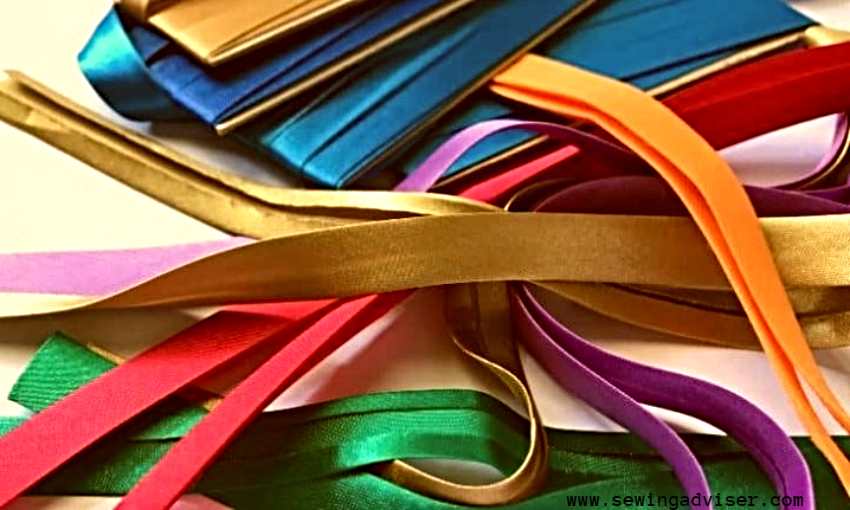
Seam binding ribbon is a type of ribbon that is used in sewing and other crafting projects. It is a narrow strip of fabric that is used to finish the raw edges of a seam or hem in order to prevent fraying and give a neat, finished appearance.
Seam binding ribbon is often made from cotton or polyester, and it comes in a variety of colors to match different fabrics. It is easy to use and can be sewn or glued onto fabric, making it a versatile and useful tool for anyone who enjoys sewing or crafting.
How To Use Seam Binding Ribbon?
Seam binding ribbon is a type of narrow ribbon that is often used in sewing and other crafts. It is typically made of cotton or polyester and is used to finish raw edges on fabric, such as the edges of a seam or hem. To use seam binding ribbon, follow these steps:
- Cut a length of seam binding ribbon that is slightly longer than the edge of the fabric that you want to finish.
- Fold the ribbon in half lengthwise, with the wrong sides of the ribbon facing each other. This will create a crease down the center of the ribbon.
- Place the folded ribbon along the edge of the fabric, with the crease facing the edge of the fabric and the raw edges of the ribbon lined up with the raw edge of the fabric.
- Use a sewing machine or hand sew the ribbon to the fabric, sewing along the folded edge of the ribbon. Be sure to stitch through both layers of the ribbon, so that the ribbon is securely attached to the fabric.
- Once the ribbon has been sewn in place, unfold it so that the finished edge of the ribbon is visible. This will give your fabric a clean, finished edge that looks professional and polished.
- You can also use seam-binding ribbon to create decorative accents on your fabric, such as bows or rosettes. Simply cut a length of ribbon to the desired size, fold it into a bow shape or rosette shape, and sew it in place using the same method described above.
In general, the seam binding ribbon is a versatile and useful tool to have in your sewing kit. It can be used to finish raw edges on fabric, add decorative accents, and give your sewing projects a professional, polished look.
What Is Straight Seam Binding?
Straight seam binding is a method of binding two pieces of fabric together by sewing a straight seam along their edges.
This type of seam is commonly used in clothing construction, as well as in other types of sewing projects where a strong, neat seam is desired.
In most cases, straight seam binding is done using a sewing machine, but it can also be done by hand if necessary.
What Is Lace Seam Binding?
Lace seam binding is a type of ribbon or tape that is often used to finish the edges of seams on garments or other fabrics.
It is typically made from nylon or polyester and has a delicate, lacy appearance that can add a decorative touch to the finished product.
It can be applied to seam edges, necklines, sleeves, or any other part of a garment.
It typically comes in a roll and is cut to the desired length and then sewn or ironed in place. Some lace seam binding has a heat-sensitive adhesive on one side, which can be activated with an iron, making it easy to apply.
The adhesive side is then pressed onto the edge of the fabric, and the lace is then fused to the fabric, creating a neat and clean finish.
This kind of lace seam binding is suitable for knit or stretchy fabric as well because they are elastic and can stretch along with the fabric without breaking.
It’s also easy to dye lace seam binding to match the color of the fabric, which makes it less noticeable.
Overall, lace seam binding is a great option for anyone looking for a decorative and easy way to finish the edges of their seams, it can add a touch of elegance to the look of a garment.
What Is Hug Snug Seam Binding?
Hug Snug Seam Binding is a type of bias tape that is used to bind and finish the raw edges of the fabric. It is often used in quilting and other crafts as well as in garment construction to provide a clean, finished edge to the fabric.
The binding is made of a combination of cotton and polyester and is stretchy, which allows it to be stretched around curves and corners without distorting the fabric.
The “Hug snug” part of the name refers to the snug fit that the binding creates when applied. Seam binding is a versatile and easy way to finish edges, it can be stitched on by machine or by hand. It provides a neat and professional look as well as adds a bit of durability and strength to the edges
It’s a wider and more elastic version of bias tape that can be used to bind edges and hems of fabrics to make them neat and tidy without bulk.
They are often used in quilting, garment construction, and a lot of other craft projects because it’s easy to use and provide a professional look.
Related Post: Review { Hug Snug Seam Binding }
What Is Wide Seam Binding?
Seam binding is a narrow strip of fabric, typically made of cotton or a cotton blend, that is used to finish the raw edges of seams in garments and other textile projects.
Wide seam binding is simply a wider version of this type of fabric, and it is used in the same way as regular seam binding to finish the raw edges of seams.
One of the benefits of wide seam binding is that it can cover more of the raw edge of a seam than regular seam binding, which can be useful if the edge of the fabric is fraying or otherwise damaged.
Additionally, it can be used to finish the raw edge on wider seams like on the bottom edge of a dress or a skirt.
The binding can be sewn onto the fabric in a variety of ways, such as folded in half and sewn down along the edge of the seam, or it can be folded over the edge of the seam and secured in place with a line of stitching.
Some people may prefer to use a double fold bias tape which is folded over the seam and secured on both sides, giving a professional finish.
Wide seam binding is often sold by the yard, so it can be cut to the length needed for a specific project. It can also be found in different widths, depending on the width of the seam you are looking to cover.
Twill Tape vs. Bias Tape
Twill tape and bias tape are both types of narrow fabric strips that are used for a variety of purposes in sewing and crafts.
Twill tape is made from twill fabric, which has a diagonal ribbed pattern and is typically used for reinforcing seams and adding decorative accents to clothing and other items.
Bias tape, on the other hand, is made from bias-cut fabric, which means it has been cut on the diagonal across the grain of the fabric, resulting in a tape that has a greater degree of stretch and flexibility.
Bias tape is commonly used for binding the edges of the fabric, such as on the edges of quilts or the hems of clothing. It can also be used for adding decorative accents, such as on the edges of collars and cuffs.
Seam Binding vs. Bias Tape
Seam binding and bias tape are both types of narrow strips of fabric that are used in sewing to finish the edges of a garment or other item. The main difference between the two is the way they are made.
Seam binding is made by folding a strip of fabric in half lengthwise and pressing it to create a crease down the middle. Bias tape, on the other hand, is made by cutting strips of fabric on the bias, or diagonal, of the fabric, which allows it to have more stretch and flexibility than seam binding.
Bias tape is often used to finish curved edges, such as necklines or armholes, because of its flexibility, whereas seam binding is more often used on straight edges.
Seam and Bias Binding Difference
Seam binding and bias binding are both types of fabric strips used to finish the raw edges of a garment or other textile. The main difference between the two is the way the fabric is cut. Seam binding is cut on the straight grain of the fabric, while bias binding is cut on the diagonal bias of the fabric.
Can Ribbon Be Used As Bias Tape?
Yes, the ribbon can be used as bias tape. Bias tape is a strip of fabric that is cut on the bias, or diagonal, of the fabric.
This allows it to have a bit of stretch and give, making it ideal for binding the edges of fabric or for use in decorative accents. A ribbon can also be cut on the bias, so it can be used in the same way as bias tape.
How To Sew Bias Tape Onto Fabric?
To sew bias tape onto fabric, you will need the following materials:
- Bias tape
- Fabric
- Sewing machine
- Thread
- Scissors
Here is a step-by-step guide on how to sew bias tape onto fabric:
- Start by cutting a piece of bias tape that is long enough to go around the edge of your fabric.
- Open the bias tape and lay it out flat on your work surface, with the wrong side facing up.
- Place your fabric on top of the bias tape, aligning the edge of the fabric with the fold line of the bias tape.
- Using a sewing machine, stitch the bias tape to the fabric along the fold line, making sure to backstitch at the beginning and end of the seam.
- Once the bias tape is attached to the fabric, fold the tape over the edge of the fabric, enclosing the raw edge of the fabric inside the tape.
- Using a sewing machine, stitch the folded bias tape in place, making sure to catch both layers of the tape in the seam.
- Continue sewing the bias tape around the entire edge of the fabric, folding, and stitching as you go.
- When you reach the end of the bias tape, cut off any excess tape and tuck the end under the beginning of the tape.
- Stitch the end of the bias tape in place to secure it, and you’re done! Your fabric should now have a neat, professional-looking edge thanks to the bias tape.
Do You Sew Seam Binding Around Corners?
Seam binding is a type of narrow fabric that is used to cover and finish the raw edges of a seam in a garment or other item.
It is often used on the edges of quilts, blankets, and other soft furnishings, as well as on the hems of clothing and other items that require a neat and tidy finish.
To sew seam binding around corners, start by measuring the length of the seam that you want to cover and cut a piece of seam binding to the appropriate length.
Next, fold the seam binding in half lengthwise and press it with an iron to create a crease down the center. This will make it easier to align the seam binding with the seam on your project.
Next, position the seam binding along the seam that you want to cover, aligning the creased edge with the seam.
Use a sewing machine or hand-sewing needle and thread to sew the seam binding to the seam, starting at one end and working your way along to the other end.
When you reach a corner, stop sewing about 1/4 inch before the corner, and cut the seam binding at a 45-degree angle so that it will fit neatly around the corner.
Fold the seam binding back along the seam and then fold it over the corner, making sure that it covers the raw edge of the seam. Continue sewing along the seam binding, making sure to catch the folded-over edge as you go.
In summary, to sew seam binding around corners, you will need to cut the seam binding to the appropriate length, fold it in half lengthwise press it with an iron, position it along the seam that you want to cover, and sew it in place using a sewing machine or hand-sewing needle and thread.
When you reach a corner, stop sewing and cut the seam binding at a 45-degree angle, fold it back along the seam and over the corner, and then continue sewing to secure it in place.
Can You Finish the Raw Edges of the Fabric By Hand?
Yes, it is possible to finish the raw edges of the fabric by hand. There are several methods you can use to do this, such as using a hemming stitch or a whip stitch. The specific method you choose will depend on the type of fabric and the desired finished look.
For example, a hemming stitch is a good option for lightweight fabrics, while a whipstitch may be better for heavier fabrics. To finish the raw edges of the fabric by hand, you will need a needle and thread, as well as a thimble if you are using a thicker fabric or thread.
You can also use a sewing machine to finish the raw edges of the fabric, but hand sewing can provide a more detailed and polished look.
How to Sew Seam Binding on a Quilt: Step-By-Step Guide
Seam binding is a type of bias tape that is used to finish the raw edges of a quilt. To sew seam binding onto a quilt, you will need the following materials:
Here are the steps to follow to sew seam binding onto a quilt:
- Cut a piece of seam binding that is long enough to go around the entire edge of the quilt.
- Fold the seam binding in half lengthwise, with the wrong sides facing each other. Press the seam binding with iron to crease it.
- Place the seam binding along the edge of the quilt, with the raw edges of the seam binding aligned with the raw edge of the quilt. Pin the seam binding in place.
- Using a sewing machine, sew the seam binding to the quilt along the crease line. Make sure to backstitch at the beginning and end of the seam to secure it.
- Repeat steps 3 and 4 until you have sewn the seam binding around the entire edge of the quilt.
- Once you have sewn the seam binding onto the quilt, you can fold it over to the back of the quilt and hand-sew it in place. This will give the quilt a clean, finished look and protect the raw edges from fraying.
Sewing seam binding onto a quilt can be a bit time-consuming, but it is a simple and effective way to finish the raw edges of your quilt. With a little practice, you will be able to sew seam binding onto a quilt quickly and easily.
Conclusion: What is Seam Binding
I hope that you are now well aware of what is seam binding. In conclusion, Seam binding is a simple yet effective way to finish the edges of the fabric and can be used in a variety of projects, from clothing to home decor.
It can be found in different colors and fabrics that help to add a touch of elegance and prevent fraying. It is an essential item for any sewing kit which helps the sewer to achieve a more professional look to the finished product.
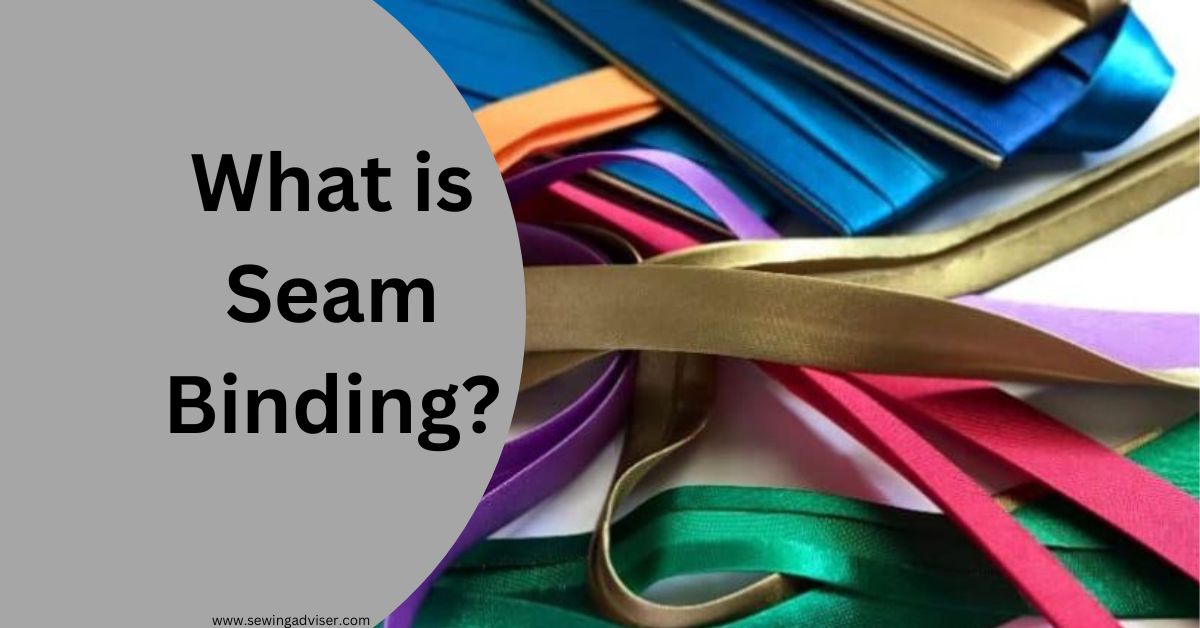
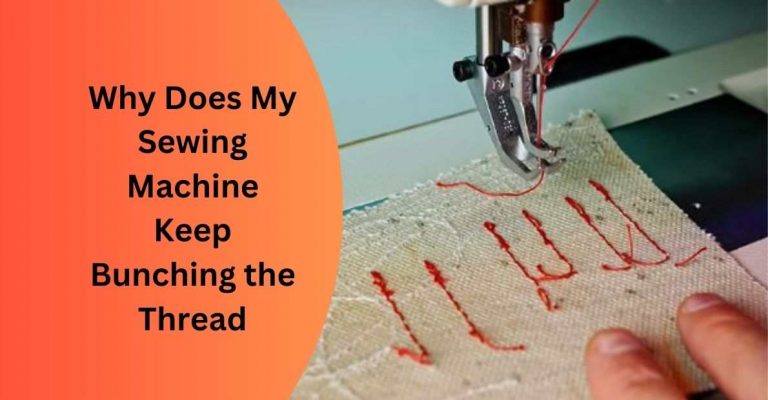
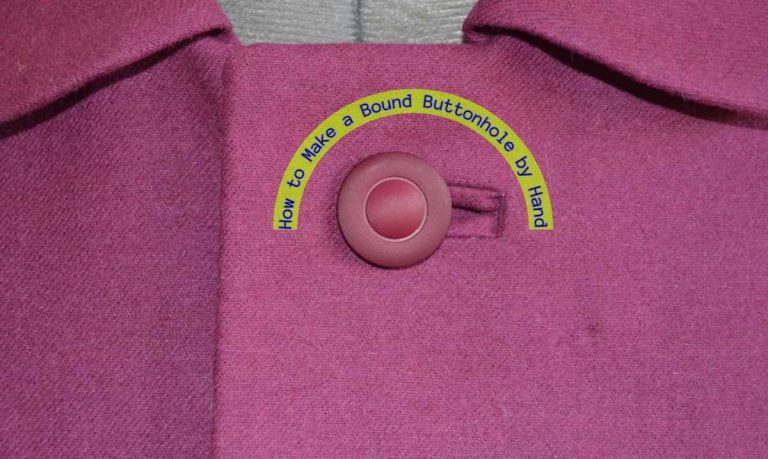
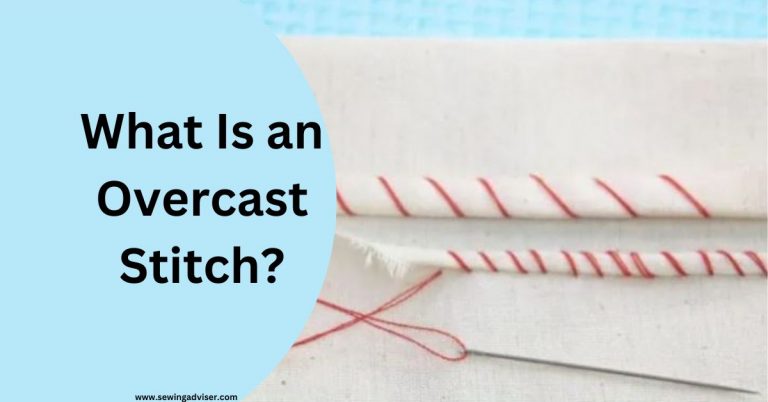
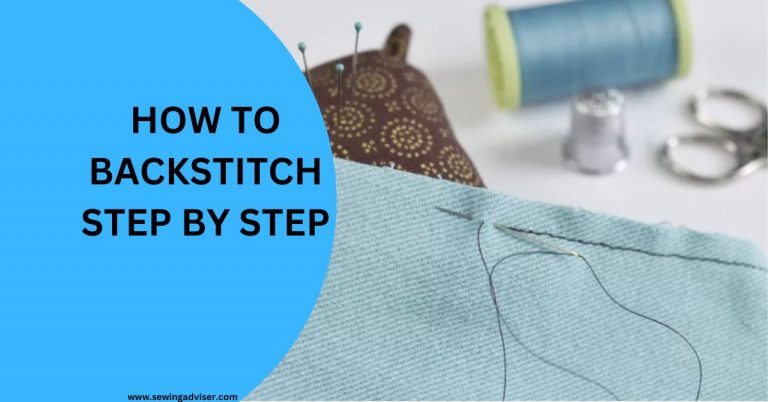
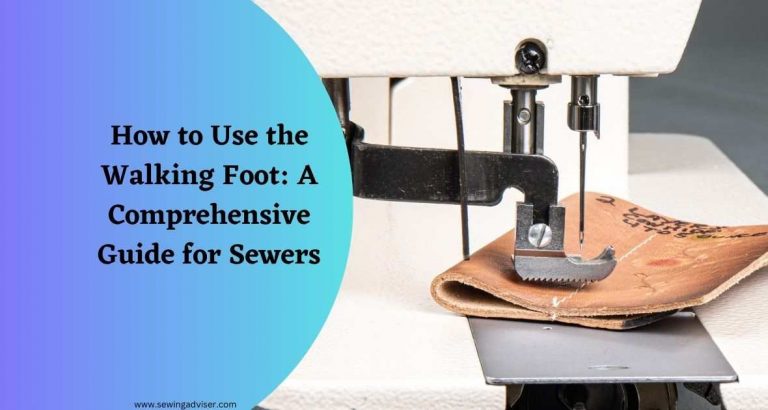
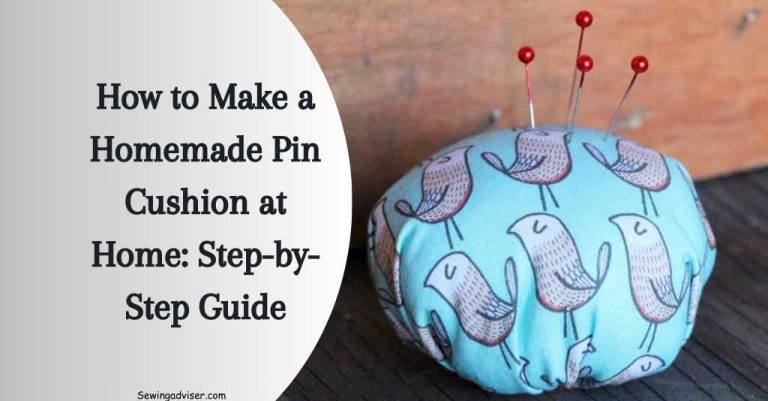
5 Comments